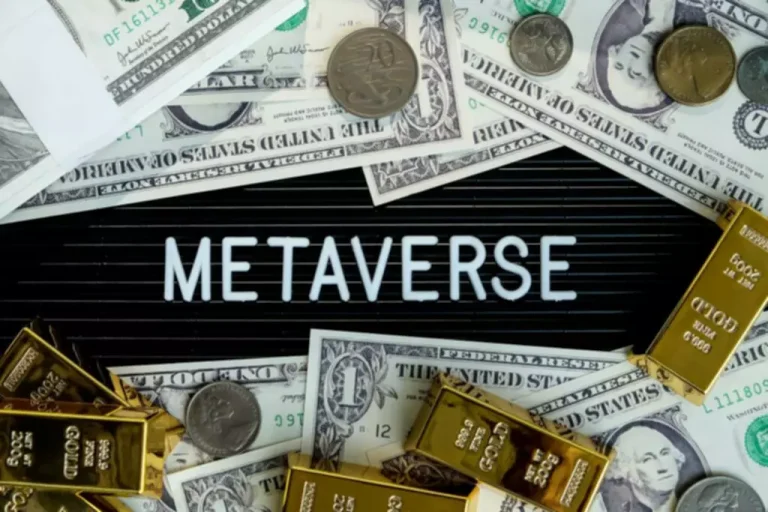FinTech
Ethereum Proof Of Stake The Validation Mechanism To Speed Up Transaction On Eth Network
In reality, it was imagined to be the mechanism securing Ethereum from the beginning, according to the white paper that originally described the new blockchain in 2013. Slashing is a disciplinary system utilized by PoS protocols to penalize validators for any dangerous or irresponsible behaviors. This normally includes the network deducting a few of their security deposit (their initial staked coins).
This might result in centralization instead of decentralization, as extra tokens might be within the palms of validators. The individuals are liable for verifying transaction knowledge are called https://www.xcritical.com/ Validators. These validators must stake their tokens on the network to qualify. But some participants can join a staking pool to lock lesser amounts. The Ethereum protocol is an open-source, decentralized community launched in 2015 by Vitalik Buterin.
They need not mine blocks, they just must create blocks when chosen and validate proposed blocks after they’re not. You can consider testifying as saying “this block appears good to me”. Validators get rewards for proposing new blocks and for attesting to ones they’ve seen.
What Is A Validator?
A Proof of Stake (PoS) network is a system that makes use of staked cryptocurrency to safe itself. Every validator node must have “locked up” a safety deposit consisting of ETH on the community to have the ability to participate in consensus. By utilizing the crypto as collateral, it compels the nodes to behave correctly and helps to maintain the network secure. Proof of Stake (PoS) is a kind of consensus mechanism that is used to safe blockchain networks. Consensus mechanisms are the backbone of all blockchains, as the underlying rules that decide how a network features. This prevented users from “double spending” their coins and ensured that the Ethereum chain was tremendously difficult to assault or manipulate.
To exploit a PoW network, a hacker will management 51% of computing power, which is impossible. But in a PoS chain, a hacker will need 51% of the total crypto on the community. There are other ways transactions on the blockchain — the software program that underpins most crypto — may be verified. In the “proof-of-work” system currently used by Ethereum, new transactions are checked by crypto miners. Thousands of present good contracts function on the Ethereum chain, with billions of dollars in property at stake. Under Proof of Stake (PoS), Ethereum makes use of “checkpoint” blocks to manage validator votes.

For example, the honest validators might decide to maintain constructing on the minority chain and ignore the attacker’s fork whereas encouraging apps, exchanges, and swimming pools to do the same. They may also resolve to forcibly take away the attacker from the community and destroy their staked ETH. Proof-of-Stake (POS) makes use of randomly selected validators to verify transactions and create new blocks.
What Comes After The Merge?
Proof of Stake (PoS) is a consensus mechanism used in blockchain networks to achieve distributed consensus and safe transactions without counting on energy-intensive mining processes. One in style consensus mechanism is Delegated Proof of Stake (DPoS), which is utilized by blockchain networks like EOS and Tron. In DPoS, token holders vote for a set of trusted nodes or delegates who’re responsible for validating transactions and creating new blocks.
Ethereum makes use of a consensus mechanism known as Gasper that combines Casper FFG proof-of-stake(opens in a new tab) with the GHOST fork-choice rule(opens in a new tab). However, it takes years to implement successfully, and the group would want to conform to the change. Validators on a proof-of-stake network such as Ethereum are chosen at random by the community to suggest new blocks.
- In fact, it was imagined to be the mechanism securing Ethereum from the start, in accordance with the white paper that originally described the model new blockchain in 2013.
- However, these are simply elements in consensus mechanisms that shield against Sybil attacks.
- That system asks individuals to use hardware (and electricity) to help the network process transactions.
- To turn into a validator, a coin proprietor should “stake” a specific amount of cash.
It considerably reduces the chances of chain reorganizations and double-spending assaults, as finalized blocks are thought of immutable. Finality also permits for sooner transaction confirmations and permits developers to build decentralized functions (DApps) with extra certainty in regards to the state of the blockchain. Ethereum’s PoS finality is achieved via a combination of epochs and checkpoints. An epoch is a set time frame throughout which a set of validators take turns proposing blocks. Within each epoch, there are checkpoints, which are predetermined points in time when the state of the blockchain is considered finalized. Ethereum’s transition from PoW to PoS brings about significant modifications to the consensus mechanism, including the idea of finality.
Aioz Community
Validators must have the necessary funds to participate within the staking process. Validators start by verifying the integrity and validity of the block header. They check the previous block’s hash, the timestamp, and the difficulty level to ensure that the block adheres to the community’s rules and protocols.

If it occurs again, the success (and mining power) behind any competing model of Ethereum will depend upon the worth of its coin in the open markets. An algorithm selects from a pool of validators primarily based on the amount of funds they have locked up. Proof of stake, first proposed on an internet forum referred to as BitcoinTalk on July eleven, 2011, has been one of the more well-liked alternate options.
Synthetix Network
To turn into a validator, one must meet particular necessities and stake a sure quantity of ETH as collateral. This staked ETH acts as a guarantee in opposition to malicious habits or misbehavior. Validators are financially incentivized to comply with the rules and act actually, as they’ll earn rewards by way of newly minted ETH and transaction fees for their participation.
For instance, Ethereum’s transition from PoW to PoS decreased the blockchain’s energy consumption by ninety nine.84%. Different proof-of-stake mechanisms might use numerous methods to achieve a consensus. Proof-of-stake reduces the amount of computational work needed to confirm blocks and transactions. Under proof-of-work, hefty computing necessities saved the blockchain secure. Proof-of-stake adjustments the way blocks are verified using the machines of coin house owners, so there does not need to be as a lot computational work accomplished. The owners provide their coins as collateral—staking—for the chance to validate blocks and earn rewards.
Near Protocol
This requires an enormous amount of computing energy and, thus, electrical energy. Each validator node has the identical copy of the blockchain’s history. Using this frequent history, they assess whether new blocks of transactions are legitimate. Then vote on this level as a bunch earlier than adding them to the main chain. To apply to be a validator, one should run correct shopper software, and deposit—or “stake”—32 Ether (about $49,000 at present prices) on the community. Prospective validators will then be added to an “activation queue that limits the rate of latest validators becoming a member of the network,” as the Ethereum Foundation explains.

Moreover, you can use your credit/debit card or crypto, together with BTC, wBTC, ETH, USDC, USDT, Link, DAI, and USDP, to make deposits. In the case of Bitcoin, this ended up placing a handful of huge eth proof of stake firms in cost of the community. Not only does proof of labor waste electricity, it generates electronic waste as well.

Generally talking, consensus is a process used to reach an settlement amongst a gaggle of people. Sign up for free on-line courses overlaying the most important core topics within the crypto universe and earn your on-chain certificates – demonstrating your new information of major Web3 topics. The merge itself won’t resolve excessive gasoline prices, however—it simply sets the stage for a set of upgrades that may finally reduce costs. These upgrades was once known as Ethereum 2.0, however that terminology was scrapped in early 2022.
CryptoKitties, a sport where players breed and trade cartoon cats, brought on a transaction pileup on the community in 2017. If an attacker wants to revert a finalized block, they might subsequently need to be willing to lose at least one-third of all of the ETH that’s been staked. Proof of work has been utilized by the Ethereum mainnet since its genesis, and it underpins older blockchains like Bitcoin. You’ll nonetheless be succesful of head to block explorers like Etherscan to get an entire record of the Ethereum blockchain. In December 2020, Ethereum launched the “beacon chain,” a proof-of-stake chain that ran in parallel with the main Ethereum blockchain. The beacon chain was neutered; while users could stake ETH on it, the principle functions of Ethereum weren’t enabled.
